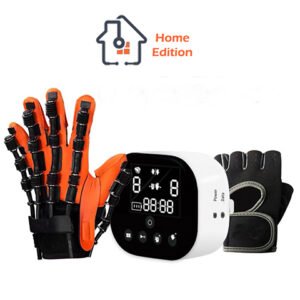Pediatric Stroke and its complications on child’s life
Pediatric stroke is a rare condition affecting one in every 4,000 newborns and an additional 2,000 older children each year.
Cardiac disease is the most common cause of stroke in childhood. In children with a cardiac repair or catheterization, nearly 50% of strokes occur within 72 hours.
The most common signs and symptoms of pediatric stroke include the sudden appearance of Weakness or numbness of the face, arm, or leg, usually on one side of the body. Trouble walking due to weakness or trouble moving one side of the body, or due to loss of coordination.
As with adults, without prompt and appropriate treatment, stroke in children can be life-threatening and requires immediate medical attention.
Pediatric stroke can also cause neurologic disability, with a risk of permanent long-term cognitive and motor impairment.
To avoid all these undesirable complications and especially arm and hand impairments, doing physical rehabilitation sessions seems to be inevitable. But, when it comes to children, attending these regular sessions in hospitals might be tiring and risked.
Using a portable, home-designed rehabilitation device might be the best alternative for these children.
The Portable Robotic Rehabilitation Gloves: SIFREHAB-1.0, in fact, is specifically designed to help young patients who are not able to attend physical therapy sessions at the hospital to do their own rehabilitative training safely and independently. As such, they can achieve full and quick recovery from pediatric stroke.
The device is equipped with a child mode suiting different ages with various lengths and widths so that it fits with a wide range of young patients and heightens recovery chances.
Apart from being an age-appropriate device, the SIFREHAB-1.0 represents a cost-effective home therapy for young stroke survivors. It is easy to use, and so it helps children exercise anytime and anywhere.
To explain in further detail, the robot gloves SIFREHAB-1.0 promote the simultaneous movement of both hands as it follows the mirror therapy training mode. It activates mirror neurons to replicate the normal hand nerve pathways to the affected hand.
So, the robot gloves promote autonomic recovery of the brain and so the gradual recovery of the affected hand/arm.
With all these advanced options available in the device, the Portable Robotic Rehabilitation Gloves: SIFREHAB-1.0 is estimated to help children learn to successfully and independently perform gross motor skills and functional mobility skills.
As a child begins to successfully develop these skills, the device will be merited for contributing to achieving a higher sense of self-esteem among young pediatric stroke patients.
Reference: What is pediatric stroke?

